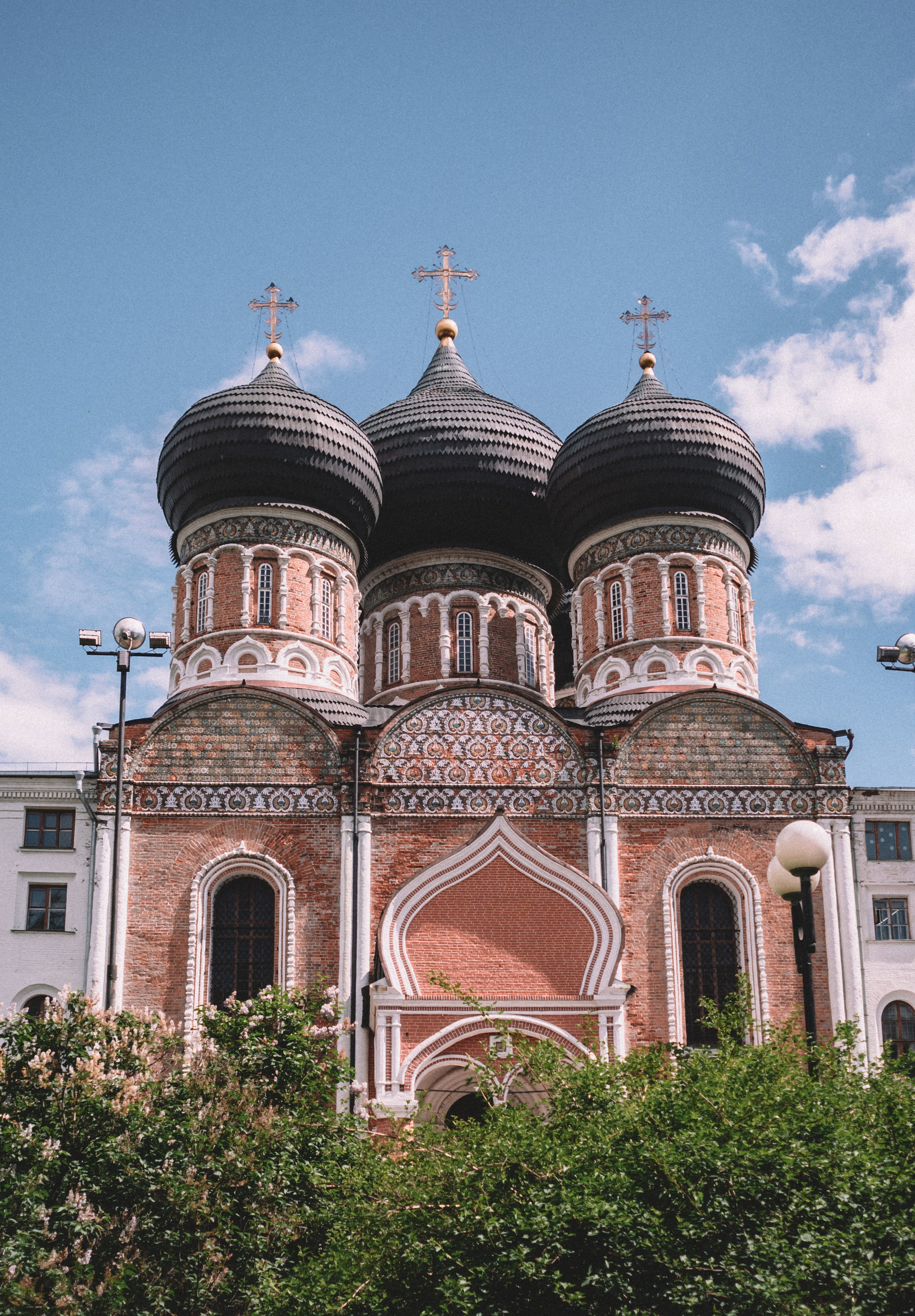
Built in 1679
Intercession Cathedral
IzmailovoThe five-domed Intercession Cathedral stands in the very center of the island in the middle of the Silver-Grape Pond. It was built in the 1670s on the site of an old wooden church.
The builders were ordered to take the Intercession Cathedral in the Alexandrovskaya Sloboda as a model. Tsar Feodor Mikhailovich invited the best masters of the Moscow Kremlin Armory Chamber to put finishing touches. The high brick quadrangle (‘chetverik’) of the cathedral has two rows of narrow windows and high porches on three sides. The five massive domes rest on tholobates pierced with windows. The façades of the Cathedral are divided into three parts by semi-columns and crowned with tiled arch gables (zakomars).
The large tiles patterned with ‘a peacock's eye’ ornament are the creation of the famous tile master Stepan Polubes (‘Half-demon’). The upper parts of the dome drums are bordered with the same kind of tiles. Compared to its exterior, the interior of the cathedral was austere, except for the iconostasis: masters from Moscow, Yaroslavl, Kostroma and the Trinity-St. Sergius Lavra worked on it.
In 1812, the cathedral was severely damaged: the French who seized the building set a fire inside. In the XIX century, Emperor Nicholas I established the largest military alms-house for the Russian army veterans on the island. For this reason, upon the project of Konstantin Thon, three buildings were attached to the Cathedral: from the north and south they directly adjoined its façades while the building to the east almost approached the apses. After the revolution of 1917, the dwelling and office buildings of the alms-house were reconstructed into communal apartments.
In the 1990s, the cathedral was returned to the Christian church. In 2000, reconstruction and restoration works were carried out in the cathedral interior. At the present day, the cathedral is functioning.
Did you know that…
- The Bridge Tower was used as the bell tower of the cathedral. It was built in 1671 as a continuation of the non-extant white stone bridge.
- In 1932, the iconostasis was removed from the cathedral and its traces were lost. At that time, the building housed the NKVD (the People's Commissariat for Internal Affairs in the USSR in the 1930s) archive.